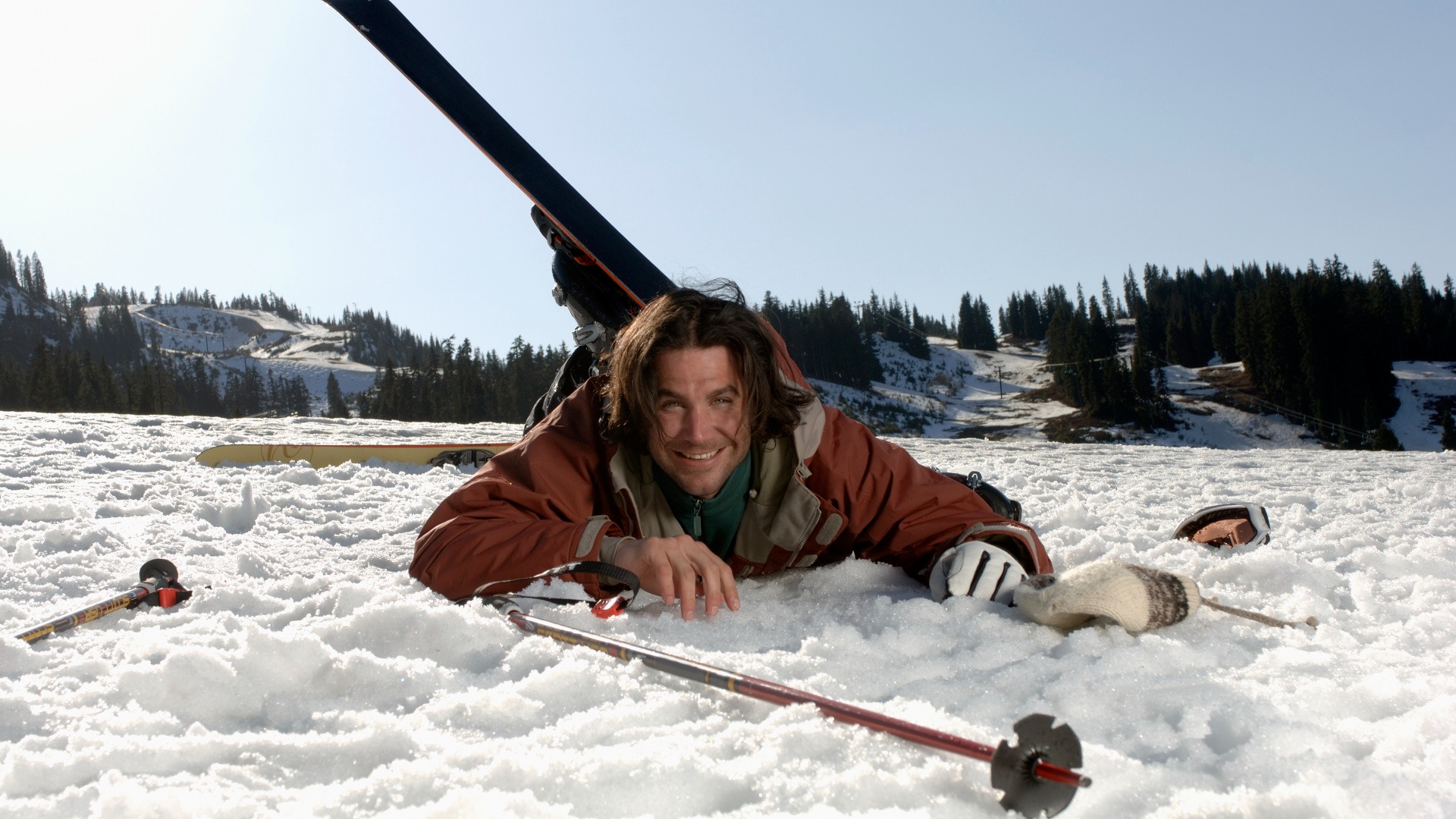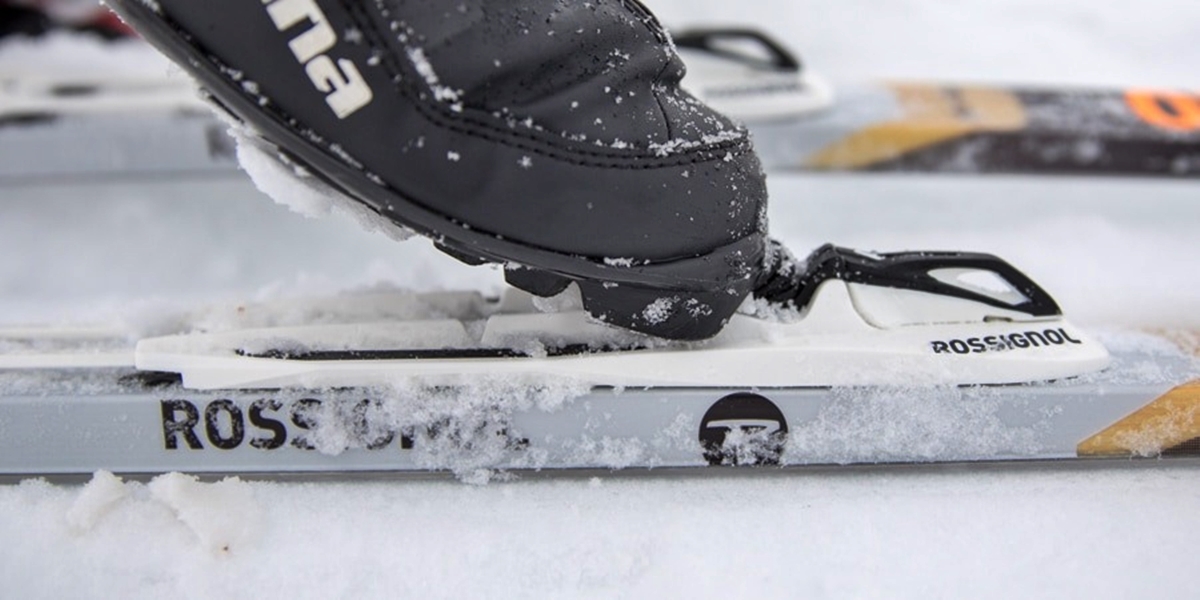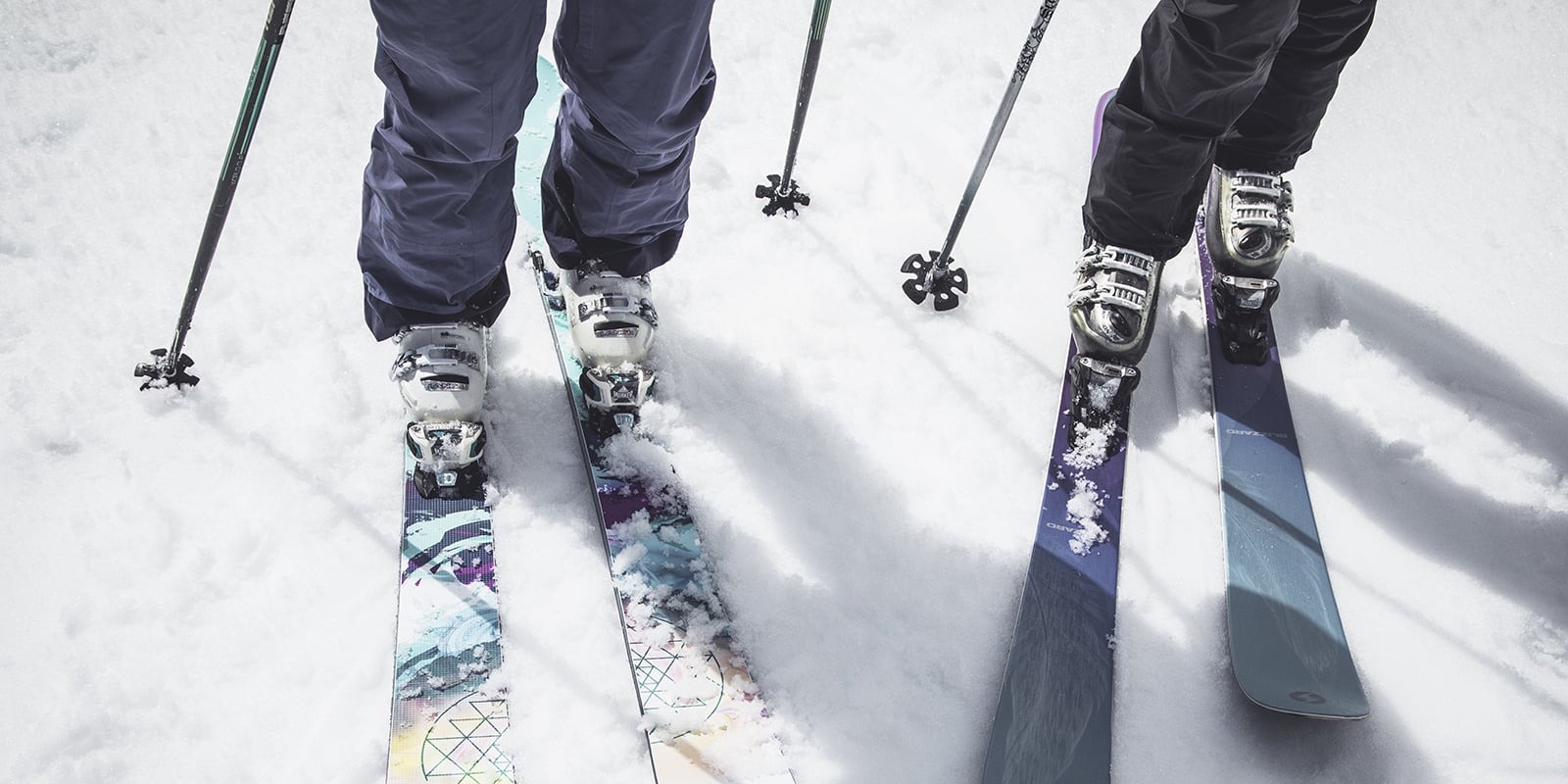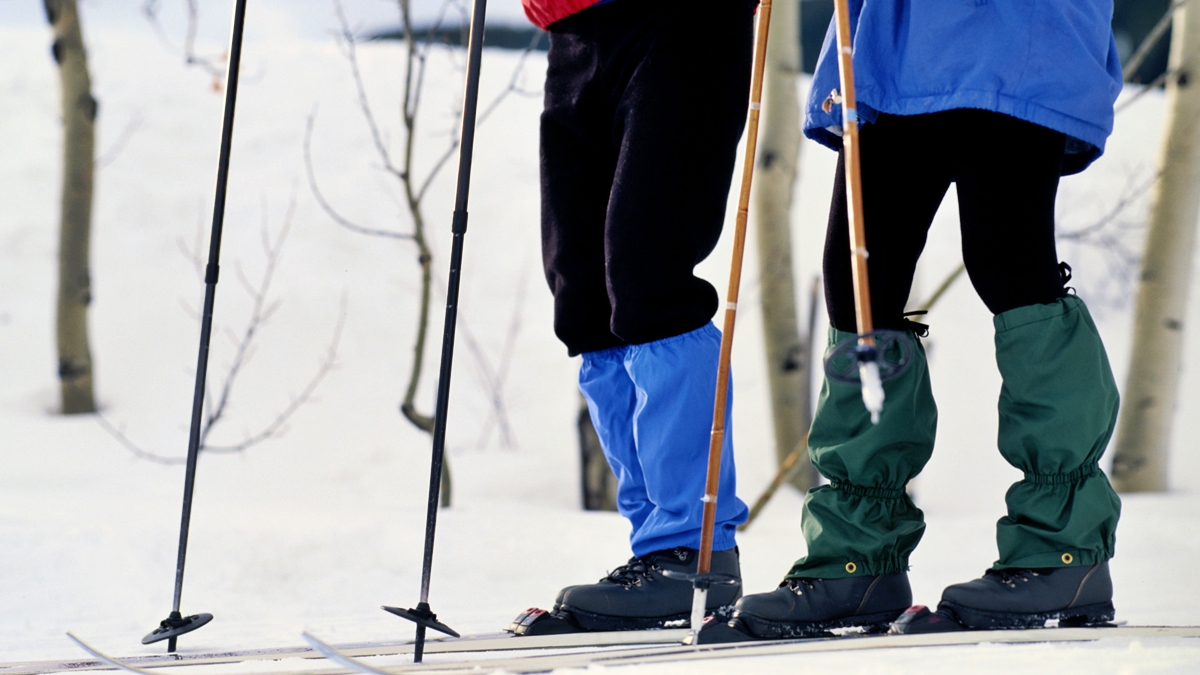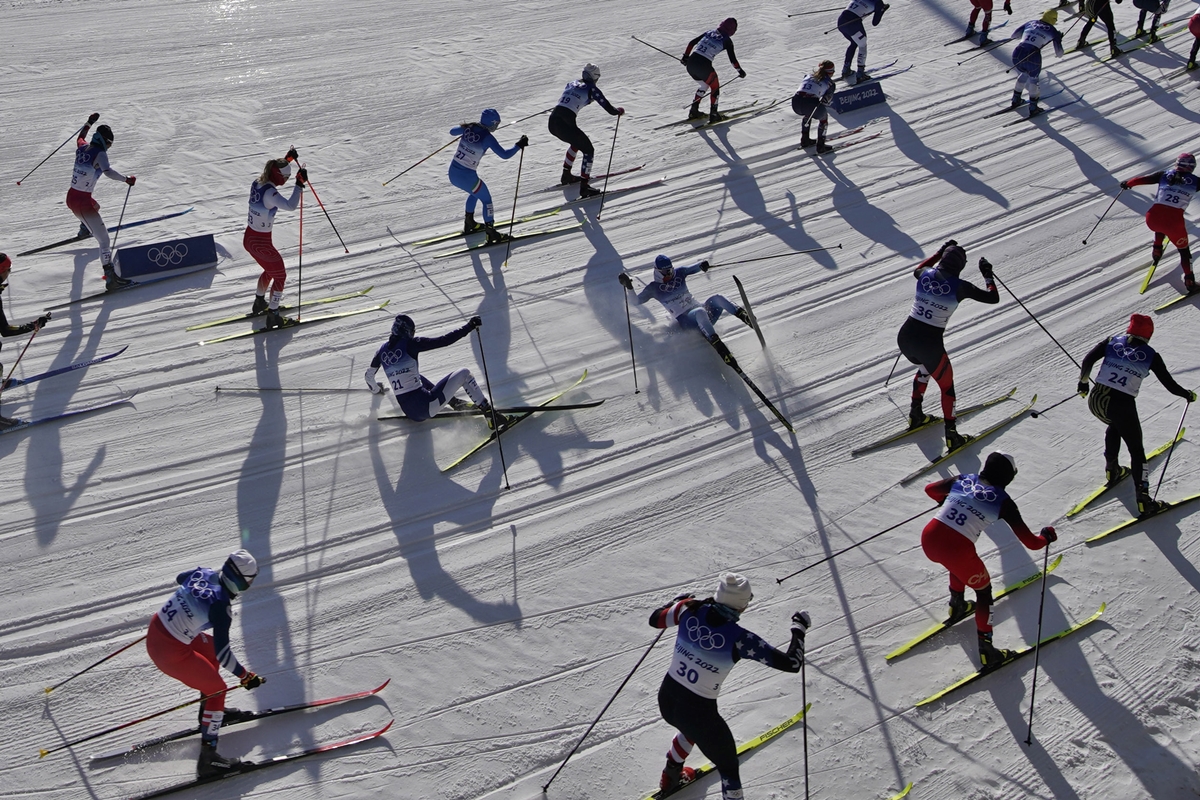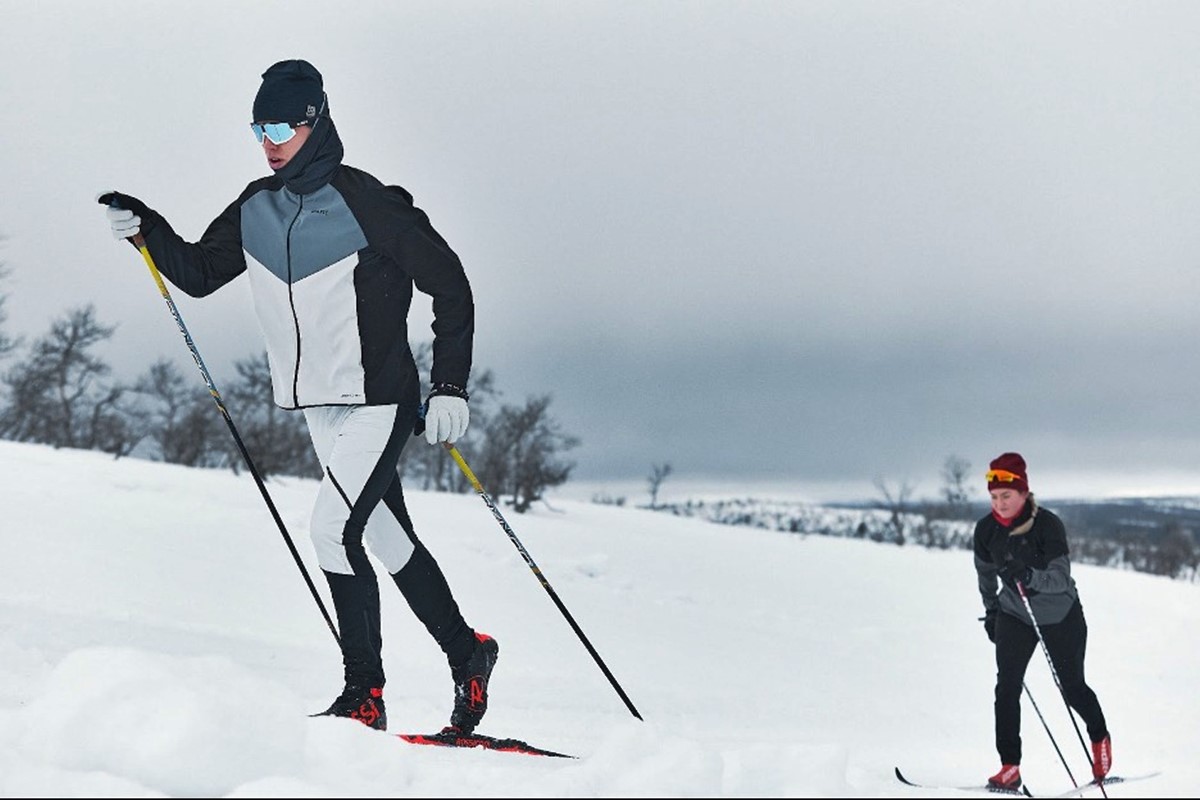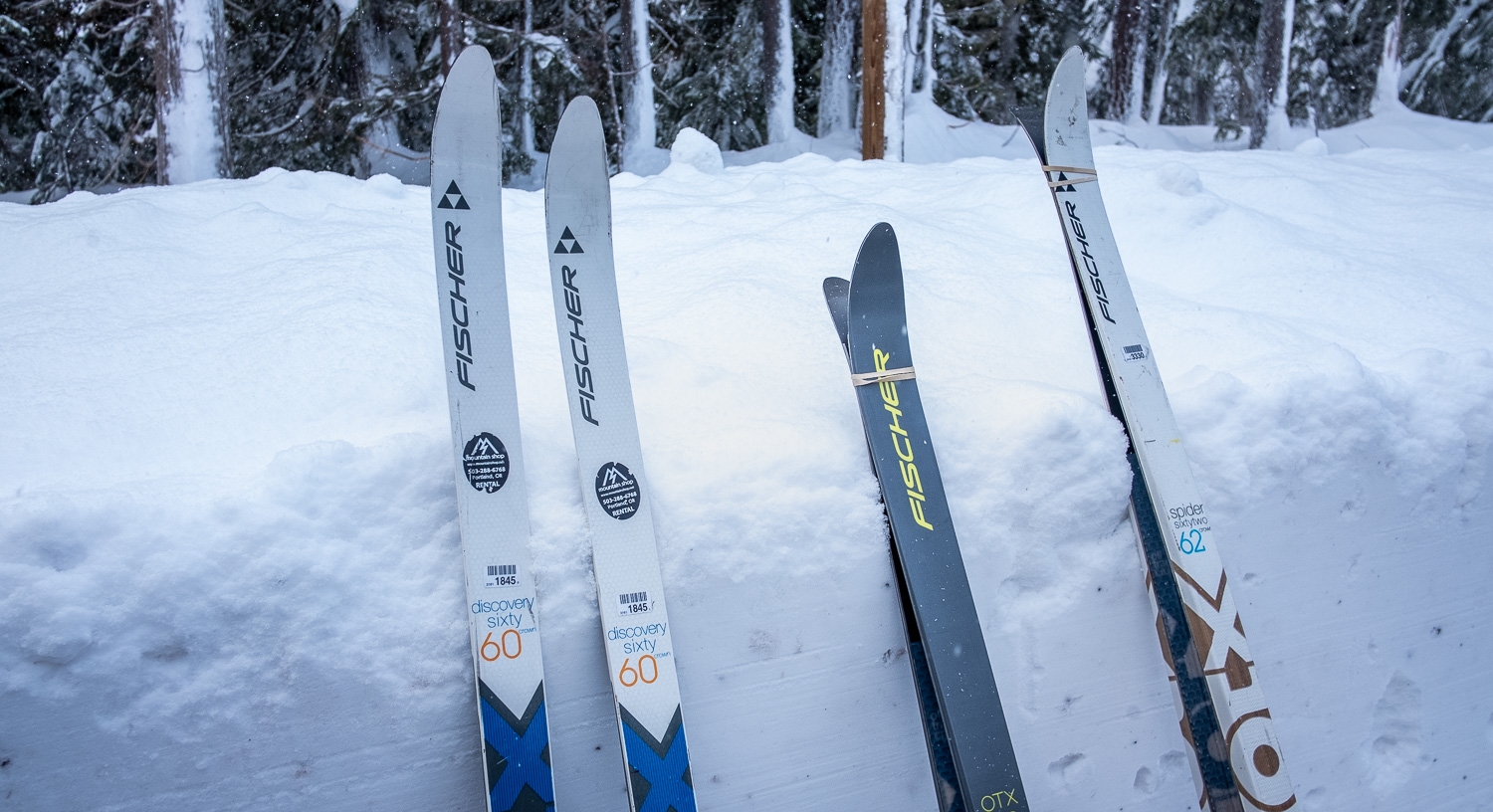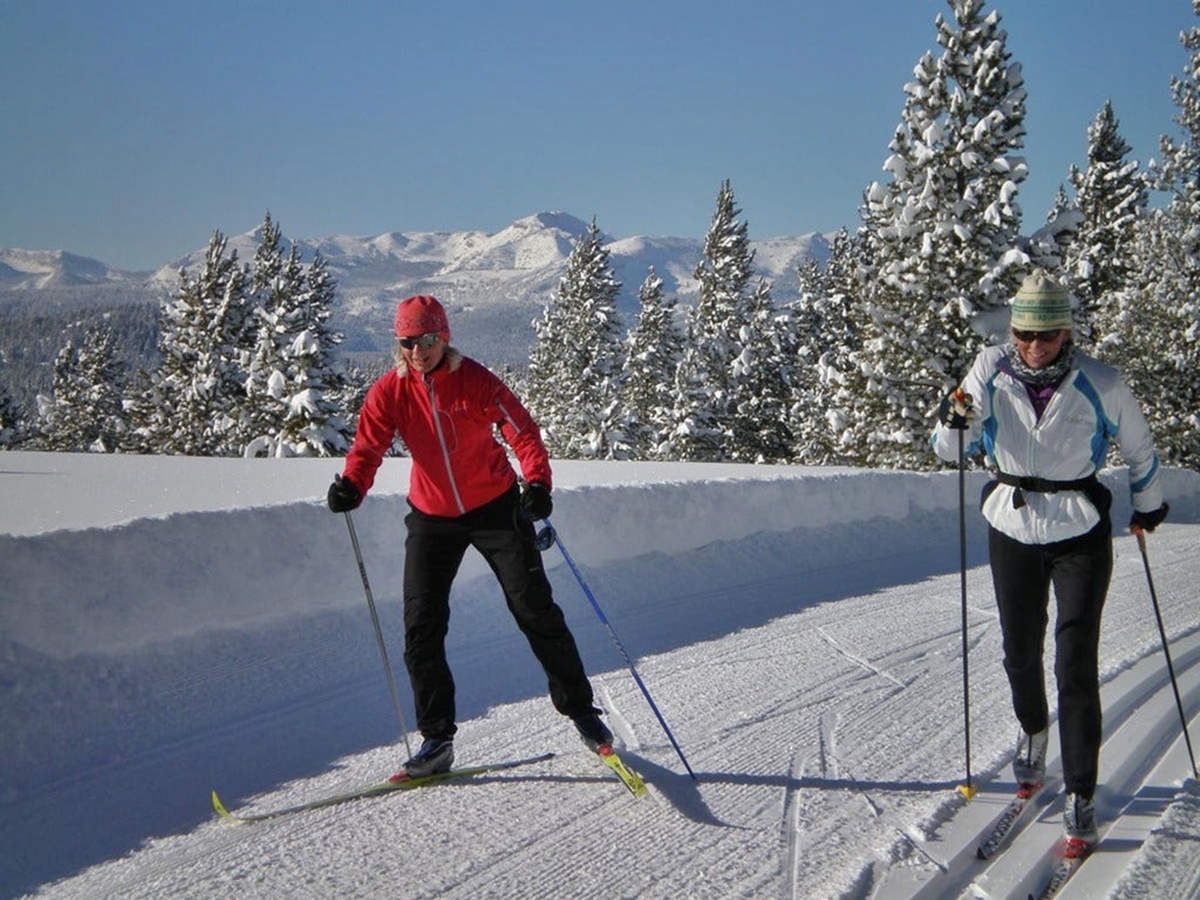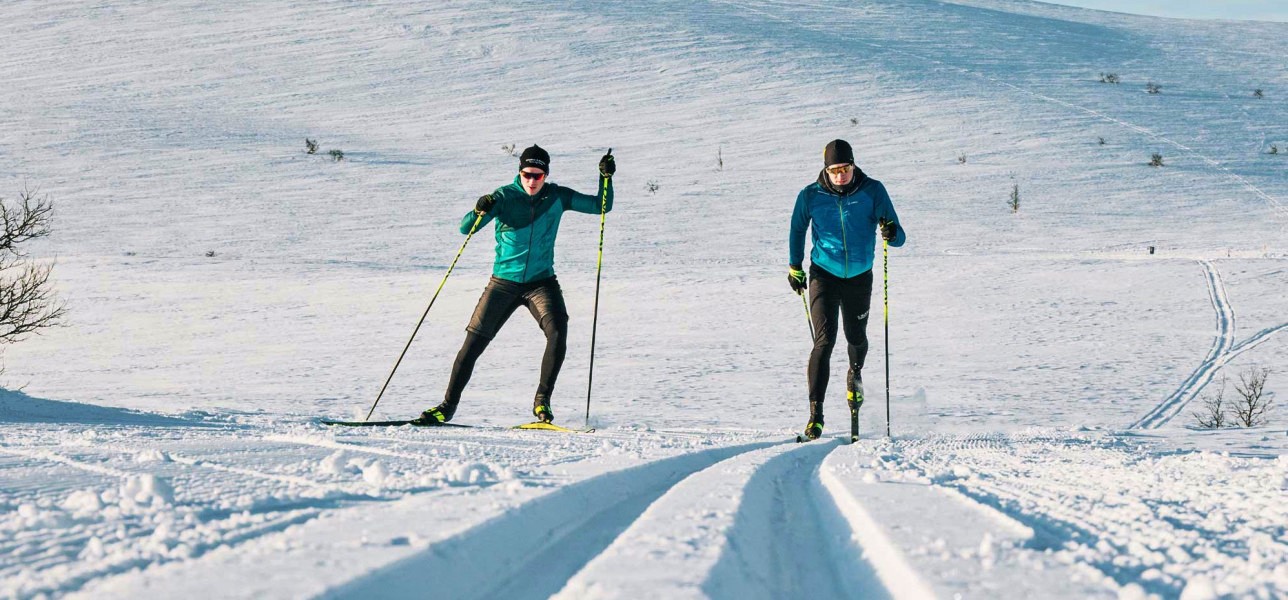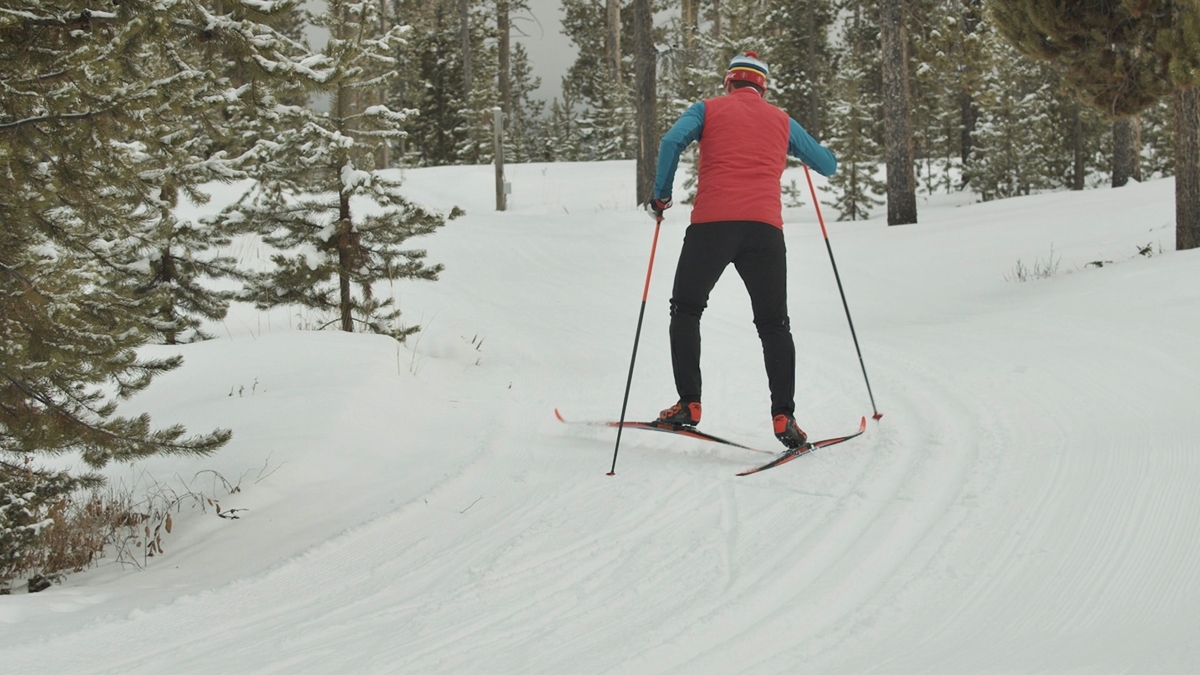

Featured
How To Stop Cross Country Skiing
Modified: August 22, 2023
Learn the best techniques and tips to stop cross country skiing with our featured guide. Improve your skills and enjoy smooth and controlled descents.
Introduction
Welcome to the exciting world of cross country skiing! Whether you are a beginner looking to try out a new winter sport or an experienced skier seeking a challenging workout, cross country skiing is a fantastic choice. This popular winter activity combines the thrill of gliding through the snow with the benefits of a full-body workout.
Unlike downhill skiing, which requires chairlifts and steep slopes, cross country skiing takes place on flat or gently rolling terrain. It is a low-impact sport that appeals to people of all ages and fitness levels. Not only does it provide excellent cardiovascular exercise, but it also engages your muscles, improves balance, and gets you outdoors enjoying nature’s beauty.
In this guide, we will walk you through the steps to get started with cross country skiing. From gathering the necessary equipment to mastering the techniques, we will cover everything you need to know to become a proficient skier. So, let’s dive in and begin your journey to becoming a cross country skiing enthusiast!
Step 1: Gather the necessary equipment
Before you hit the snow, it’s important to gather the necessary equipment for cross country skiing. Here are the essential items you’ll need:
- Cross country skis: These are longer and narrower than downhill skis, and they are designed to provide stability and glide on groomed or ungroomed trails.
- Bindings: Bindings are used to attach your boots to the skis. There are different types of bindings available, including NNN (New Nordic Norm) and SNS (Salomon Nordic System).
- Boots: Cross country ski boots are lightweight, flexible, and provide ankle support for efficient movement and control.
- Poles: Ski poles help with balance, propulsion, and maneuvering. They should be the correct length, with your elbow bent at a 90-degree angle when gripping the pole.
- Clothing: Dress in layers to stay warm and dry during your ski sessions. It’s important to wear moisture-wicking base layers, insulating mid-layers, and a windproof outer shell.
- Gloves and hat: Protect your extremities from frostbite by wearing warm gloves or mittens and a hat that covers your ears.
- Ski socks: Choose ski-specific socks made from moisture-wicking materials to keep your feet dry and comfortable.
- Ski wax: Waxing your skis helps improve glide and grip. There are different types of wax for different snow conditions, such as universal wax, kick wax, and glide wax.
When purchasing equipment, it’s best to visit a specialty ski shop where knowledgeable staff can help ensure you get the right fit and proper equipment for your skill level. Renting equipment is also an option if you’re just starting out or trying it for the first time.
Now that you have gathered all the necessary equipment, let’s move on to the next step: finding a suitable location for skiing.
Step 2: Find a suitable location for skiing
Choosing the right location for cross country skiing is crucial to have an enjoyable and safe experience. Here are some factors to consider when finding a suitable location:
- Trails: Look for trails specifically designed for cross country skiing. These trails are groomed, meaning they are packed down and smoothed out, providing optimal conditions for skiing.
- Difficulty level: Consider your skill level when selecting a location. Look for trails that match your abilities, whether you’re a beginner, intermediate, or advanced skier.
- Accessibility: Choose a location that is easily accessible, preferably within a reasonable distance from your home or accommodation. This will make it convenient for regular skiing sessions.
- Scenic beauty: If you enjoy skiing amidst beautiful landscapes, look for locations with stunning views, such as forests, mountains, or lakes.
- Amenities: Check if the location offers amenities like parking, restrooms, warming huts, and rental equipment services. These facilities can enhance your skiing experience.
- Weather conditions: Consider the prevailing weather conditions in the area, such as temperature and snowfall. Optimal skiing conditions include cooler temperatures and freshly fallen snow.
- Trail etiquette: Familiarize yourself with the trail rules and etiquette. Follow posted signs, yield to other skiers, and respect the natural environment.
You can research local ski resorts, national parks, and dedicated ski centers to find suitable cross country skiing locations. Many websites and apps provide trail maps, trail difficulty ratings, and user reviews, which can help you make an informed decision.
Remember, safety should always be a priority. If you’re a beginner, consider taking lessons or skiing with an experienced friend to ensure you’re aware of proper techniques and precautions.
Now that you have found a suitable location, let’s move on to the next step: preparing your body for skiing.
Step 3: Prepare your body for skiing
Before hitting the cross country ski trails, it’s important to prepare your body for the physical demands of the sport. Here are some key steps to get your body ready:
- Warm-up: Start your skiing session with a dynamic warm-up routine. This can include light jogging, jumping jacks, lunges, and leg swings to loosen up your muscles and increase blood flow.
- Stretching: Perform stretching exercises that target the major muscle groups used in skiing, such as the quadriceps, hamstrings, calves, and hip flexors. Hold each stretch for 20-30 seconds to improve flexibility and prevent injuries.
- Strength training: Incorporate strength training exercises into your fitness routine to build muscle strength and endurance. Focus on exercises that target your legs, core, and upper body, such as squats, lunges, planks, and push-ups.
- Cardiovascular fitness: Engage in aerobic activities like running, cycling, or swimming to improve your cardiovascular endurance. A strong cardiovascular system will help you ski for longer periods without getting fatigued.
- Balance and stability: Include exercises that improve your balance and stability, such as single-leg squats or standing on one leg. Good balance is crucial for maintaining control and preventing falls while skiing.
- Proper nutrition: Fuel your body with a balanced diet that includes carbohydrates for energy, protein for muscle repair, and healthy fats for overall well-being. Stay hydrated before, during, and after your skiing session.
- Rest and recovery: Allow your body adequate time to rest and recover between skiing sessions. This will help prevent overuse injuries and ensure long-term enjoyment of the sport.
It’s important to listen to your body and not push beyond your limits. Start slowly and gradually increase the intensity and duration of your skiing sessions as your fitness level improves.
Now that your body is prepared for skiing, let’s move on to the next step: learning the basic skiing techniques.
Step 4: Learn the basic skiing techniques
Learning the basic skiing techniques is essential to become a proficient cross country skier. Here are the fundamental techniques to master:
- Classic technique: The classic technique involves a diagonal stride, where you kick one ski forward while gliding on the other. This technique is ideal for flat to gently rolling terrain.
- Skate technique: The skate technique is used on groomed trails with a skating motion, similar to ice skating. Push off the inside edge of one ski and glide on the opposite ski.
- Double poling: Double poling is used to maintain momentum and speed on flat sections. Utilize the strength of your core and upper body to propel yourself forward by pushing both poles into the snow simultaneously.
- Downhill technique: When descending hills, mastering the snowplow technique is crucial. Form a V-shape with your skis, with the tips close together and the tails wider apart, to control your speed.
- Turning: To execute turns, shift your weight to the ski you want to turn with and guide the turn using your poles while leaning slightly in the direction of the turn.
- Herringbone technique: The herringbone technique is used for ascending steep hills. Place your skis in a V-shape, with the tips pointing outward and the tails close together, and use a walking motion to climb uphill.
It’s highly recommended to take lessons from a certified ski instructor to learn these techniques correctly. They can provide valuable guidance, feedback, and tips to improve your form and efficiency on the skis.
Practice these techniques in a controlled environment before venturing onto more challenging trails. Focus on mastering one technique at a time and gradually incorporate them into your skiing repertoire.
Now that you have familiarized yourself with the basic skiing techniques, let’s move on to the next step: practicing and improving your skills.
Step 5: Practice and improve your skills
Practice makes perfect, and cross country skiing is no exception. To become a skilled and confident skier, it’s important to dedicate time to practice and continually improve your skills. Here are some tips:
- Consistency: Try to ski regularly to build muscle memory and maintain your fitness level. Even short practice sessions a few times a week can make a significant difference.
- Varied terrain: Challenge yourself by skiing on different types of terrain, such as flat, hilly, or uneven trails. This will help you adapt to various conditions and improve your overall skiing ability.
- Focus on technique: Concentrate on perfecting your technique with each ski session. Pay attention to your body position, weight distribution, and timing of each movement.
- Interval training: Incorporate interval training into your skiing routine to improve your cardiovascular endurance and increase your speed. Alternate between faster-paced skiing and slower recovery periods.
- Video analysis: Record yourself skiing and analyze your technique. Look for areas of improvement and compare your form to instructional videos or seek feedback from experienced skiers or instructors.
- Join a ski group or club: Skiing with others who share your passion can be motivating and provide opportunities for learning and advancement. Look for local ski groups or clubs in your area.
- Participate in ski events or races: Signing up for ski events or races can add a competitive element to your skiing journey. It can also provide a great way to gauge your progress and set goals.
- Take advanced lessons: Once you have mastered the basic techniques, consider taking advanced lessons or clinics to further enhance your skills. These specialized lessons can help you refine specific techniques or learn new ones.
Remember to be patient with yourself. Improving your skiing skills takes time and practice. Celebrate small victories along the way and enjoy the journey of continuous improvement.
Now that you’re actively working on improving your skills, let’s move on to the next step: taking proper care of your ski equipment.
Step 6: Take proper care of your ski equipment
Taking care of your ski equipment is essential for its longevity and optimal performance. Proper maintenance not only prolongs the life of your equipment but also ensures a safe and enjoyable skiing experience. Here are some tips to help you take care of your ski equipment:
- Storage: Store your skis in a cool, dry place away from direct sunlight. Keep them in a ski bag or hang them on a rack to prevent any damage or warping.
- Cleaning: After each skiing session, wipe down your skis with a soft cloth to remove any dirt or moisture. Pay attention to the bindings and edges to ensure they are clean and free of debris.
- Waxing: Regularly wax your skis to maintain their glide and protect the base. Apply the appropriate type of wax for the snow conditions and follow the manufacturer’s instructions for waxing.
- Edge maintenance: Check the edges of your skis for any burrs or damage. Use a diamond stone or file to smooth out any imperfections and maintain sharp edges for better control on the snow.
- Binding inspection: Regularly inspect the bindings for any signs of wear or damage. Ensure that the binding settings are adjusted correctly for your weight and skiing ability.
- Boot care: Clean your ski boots with a damp cloth and remove any snow or debris from the soles. Store them in a well-ventilated area to prevent moisture buildup and odor.
- Equipment check: Before each skiing session, visually inspect your skis, boots, bindings, and poles for any visible signs of damage or wear. Address any issues promptly or consult a professional if needed.
- Professional servicing: Periodically, take your skis to a professional ski shop for a tune-up. They can perform tasks like base repairs, edge sharpening, and binding adjustments to keep your equipment in top shape.
By taking good care of your ski equipment, you can prolong its lifespan and ensure optimal performance on the slopes. It’s also a good idea to educate yourself on equipment maintenance by reading manufacturer guidelines or seeking advice from experienced skiers or professionals.
Now that you’ve learned how to take care of your ski equipment, let’s move on to the next step: staying safe while skiing.
Step 7: Stay safe while skiing
Safety should always be a top priority when engaging in any outdoor activity, and cross country skiing is no exception. Here are some essential tips to help you stay safe while enjoying your time on the trails:
- Know your limits: Be aware of your own skiing abilities and stay within your comfort zone. Avoid skiing on trails that are too difficult for your skill level.
- Wear appropriate gear: Dress in layers to accommodate changing weather conditions. Wear a helmet to protect your head, and use sunglasses or goggles and sunscreen to shield your eyes and skin from the sun’s rays.
- Stay hydrated: Drink plenty of water before, during, and after your skiing session to prevent dehydration. Replenish electrolytes as needed, especially during longer sessions or in hot weather.
- Know the trail conditions: Check the trail conditions before heading out. Be aware of any hazards such as ice patches, rocks, or tree branches that could impede your skiing or cause injuries.
- Observe trail etiquette: Yield to other skiers when necessary and follow posted signs and markers. Maintain a safe distance from other skiers to avoid collisions, especially on narrow trails or during busy times.
- Carry a trail map and communication device: Familiarize yourself with the trail map and carry it with you. Additionally, bring a cell phone or other communication device in case you need to call for assistance in case of an emergency.
- Be mindful of wildlife: Respect the natural environment and be aware of any wildlife that may be present. Keep a safe distance and do not disturb or feed any animals you encounter.
- Stay informed about weather conditions: Check the weather forecast before heading out and be prepared for changing weather conditions. Be cautious of strong winds, extreme cold, or sudden weather changes.
- Ski with a buddy: Whenever possible, ski with a friend or in a group. Having a skiing buddy adds an extra layer of safety and ensures that someone is there to help in case of an emergency.
- Be avalanche aware: If skiing in mountainous areas prone to avalanches, educate yourself about avalanche safety and take appropriate precautions, such as carrying avalanche safety equipment and avoiding high-risk areas.
Remember, staying safe while skiing is essential for your well-being and the well-being of others. Always use common sense, follow safety guidelines, and be aware of your surroundings to minimize the risk of accidents or injuries.
Now that you are equipped with safety knowledge, let’s move on to the final step: enjoying the benefits of cross country skiing.
Step 8: Enjoy the benefits of cross country skiing
Cross country skiing offers a plethora of benefits beyond just being a fun winter activity. Here are some advantages to be gained from this exhilarating sport:
- Full-body workout: Cross country skiing is a fantastic way to engage your entire body. It works your legs, core, and upper body, providing a complete cardiovascular and strength training workout.
- Improved cardiovascular fitness: Skiing raises your heart rate, improves your lung capacity, and enhances your overall cardiovascular endurance. Regular skiing sessions can result in improved fitness and stamina over time.
- Low-impact exercise: Unlike high-impact activities like running or downhill skiing, cross country skiing is gentle on your joints. It reduces the risk of injuries and is a great option for individuals of all fitness levels and ages.
- Weight management: Skiing helps burn calories and can aid in weight loss or weight maintenance. The combination of aerobic exercise and muscle engagement makes it an effective calorie-burning activity.
- Nature immersion: One of the greatest joys of cross country skiing is being surrounded by the beauty of nature. As you glide through snowy landscapes, you can enjoy the tranquility of the outdoors and the sights and sounds of the winter season.
- Mental well-being: Skiing has numerous mental health benefits. It can reduce stress, boost your mood, and improve your overall mental well-being. The combination of physical activity, fresh air, and the release of endorphins can leave you feeling rejuvenated and content.
- Social connection: Cross country skiing can be a social activity, allowing you to connect with friends, family, or even meet new people who share a passion for the sport. Skiing together can foster camaraderie and create lasting memories.
- Accessibility: Cross country skiing can be enjoyed in various locations, from local trails to ski resorts. It is a versatile sport that can be adapted to different terrains and skill levels, making it accessible to almost anyone.
- Affordability: Compared to other winter sports, cross country skiing tends to be more affordable. While there may be some initial costs for equipment, skiing on groomed trails is often less expensive than downhill skiing.
- Lifelong hobby: Cross country skiing is a sport that you can enjoy throughout your life. It provides ongoing opportunities for improvement, exploration, and adventure, making it a fulfilling and enduring hobby.
As you embark on your cross country skiing journey, embrace these benefits and relish in the joy of gliding through snow-covered landscapes.
Congratulations! You have now learned the eight steps to make the most of your cross country skiing experience. It’s time to venture out onto the trails, feel the crisp winter air on your face, and enjoy the wonders of this incredible sport. Happy skiing!
Conclusion
Cross country skiing is a wonderful winter activity that offers a multitude of benefits for both the body and the mind. Throughout this guide, we have explored the eight steps to help you embark on your cross country skiing journey.
We started by gathering the necessary equipment, including skis, bindings, boots, and poles. Next, we discussed the importance of finding a suitable location for skiing, considering factors such as trail conditions, difficulty level, and amenities.
Preparing your body for skiing was the next step, with warm-up exercises, stretching, strength training, and cardiovascular fitness. Learning the basic skiing techniques, such as the classic and skate techniques, was essential for building a strong foundation.
We then emphasized the significance of practice and improvement, encouraging consistency, varied terrain, and focus on technique. Taking proper care of your ski equipment, including storage, cleaning, waxing, and regular inspections, ensures its longevity and optimal performance.
Staying safe while skiing is of utmost importance, and we provided valuable tips on trail etiquette, gear, hydration, weather conditions, and wildlife awareness. Lastly, we highlighted the amazing benefits of cross country skiing, ranging from a full-body workout and improved cardiovascular fitness to mental well-being and social connections.
With these eight steps, you are now equipped to embark on your cross country skiing adventure. Remember to start at your own pace, seek lessons if needed, and always prioritize safety. Enjoy the beauty of nature, the exhilaration of gliding through snowy landscapes, and the many physical and mental benefits cross country skiing has to offer.
Now, go out there, embrace the winter wonderland, and make the most of your cross country skiing experience! Happy skiing!
